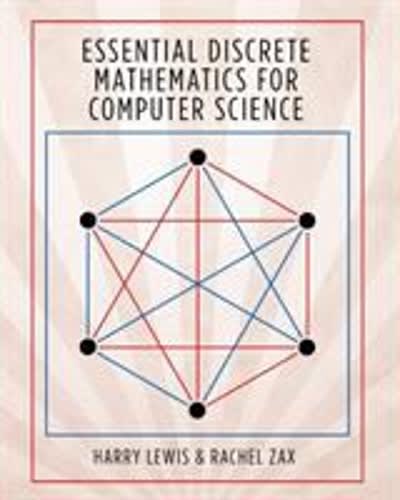Question
Researchers experimenting with cloud seeding in Arizona want a random sequence of days for their experiments. (Reference: Proceedings of the National Academy of Science ,
Researchers experimenting with cloud seeding in Arizona want a random sequence of days for their experiments. (Reference:Proceedings of the National Academy of Science, Vol. 68, pp. 649-652.) Suppose they have the following itinerary for consecutive days, where S indicates a day for cloud seeding and N indicates a day for no cloud seeding.SSSSNNNSSSSNNSNSSSNNSSSSTest the sequence for randomness. Use= 0.05.
(a) What is the level of significance?
State the null and alternate hypotheses.
Ho: The symbols are randomly mixed.H1: The symbols are not randomly mixed.
Ho: The symbols are not randomly mixed.H1: The symbols are randomly mixed.
Ho: The symbols are randomly mixed.H1: The symbols are randomly mixed.
Ho: The symbols are not randomly mixed.H1: The symbols are not randomly mixed.
(b) Find the sample test statisticR, the number of runs.
(c) Find the upper and lower critical values in Table 10 of Appendix II.c1c2(d) Conclude the test.
At the= 0.05 level, we reject the null hypothesis and conclude the data are statistically significant.
At the= 0.05 level, we reject the null hypothesis and conclude the data are not statistically significant.
At the= 0.05 level, we fail to reject the null hypothesis and conclude the data are not statistically significant.
At the= 0.05 level, we fail to reject the null hypothesis and conclude the data are statistically significant.
(e) Interpret your conclusion in the context of the application.
Reject the null hypothesis, there is sufficient evidence that the sequence of days for seeding and not seeding is not random.
Fail to reject the null hypothesis, there is sufficient evidence that the sequence of days for seeding and not seeding is not random.
Fail to reject the null hypothesis, there is insufficient evidence that the sequence of days for seeding and not seeding is not random.
Reject the null hypothesis, there is insufficient evidence that the sequence of days for seeding and not seeding is not random.
Step by Step Solution
There are 3 Steps involved in it
Step: 1

Get Instant Access to Expert-Tailored Solutions
See step-by-step solutions with expert insights and AI powered tools for academic success
Step: 2

Step: 3

Ace Your Homework with AI
Get the answers you need in no time with our AI-driven, step-by-step assistance
Get Started


